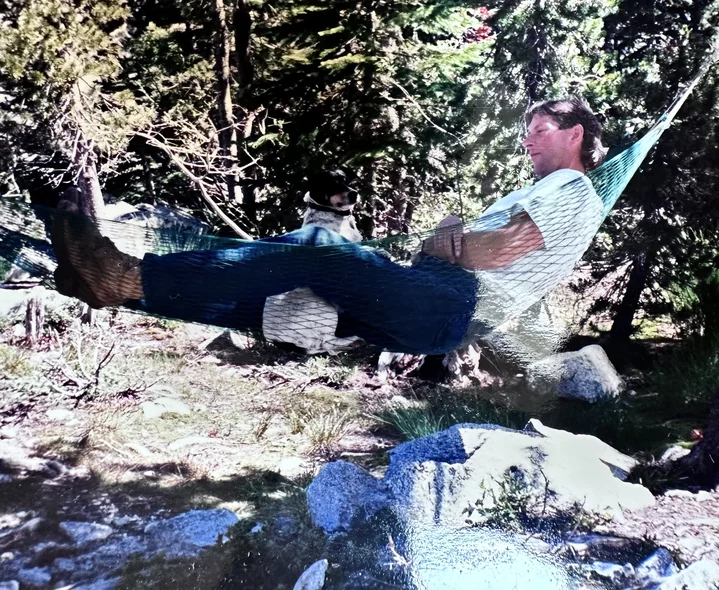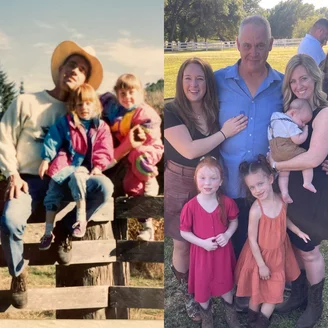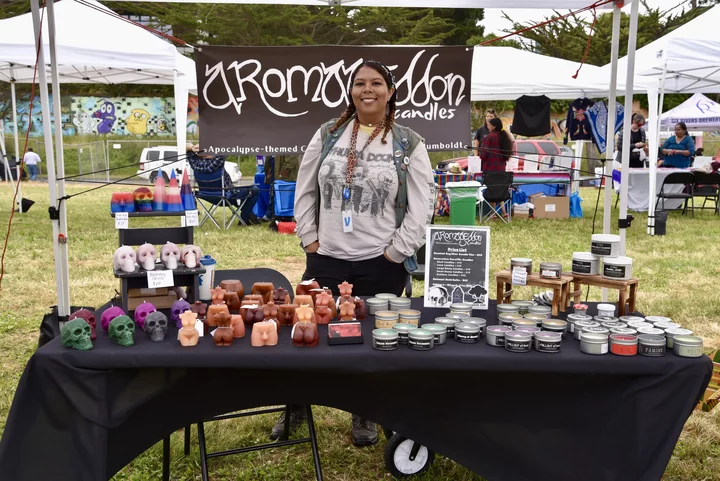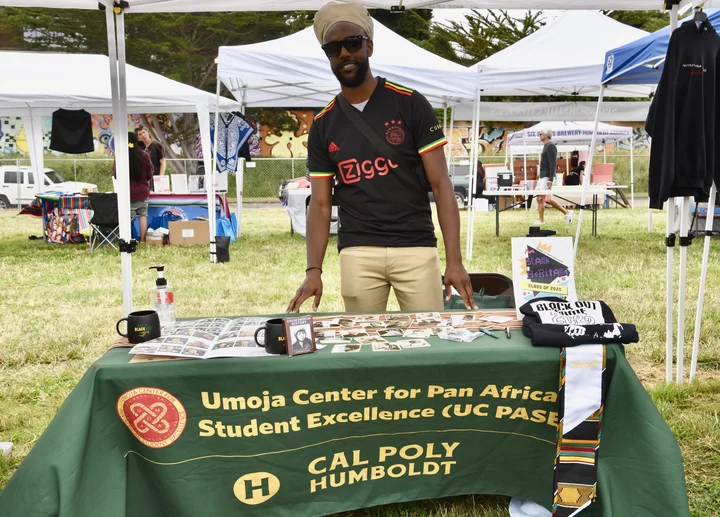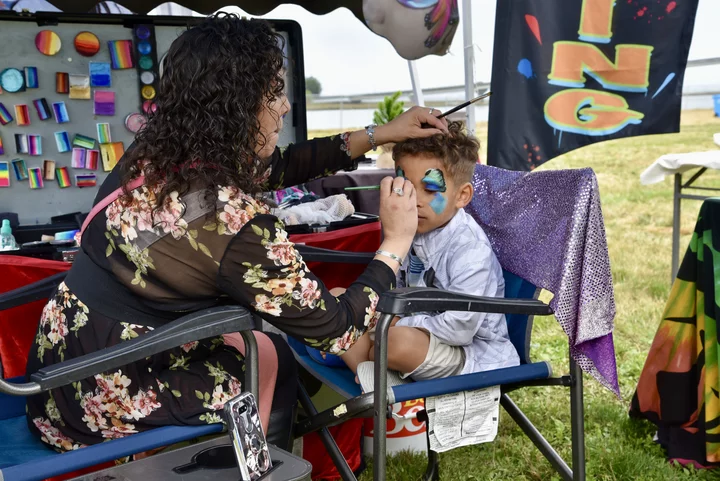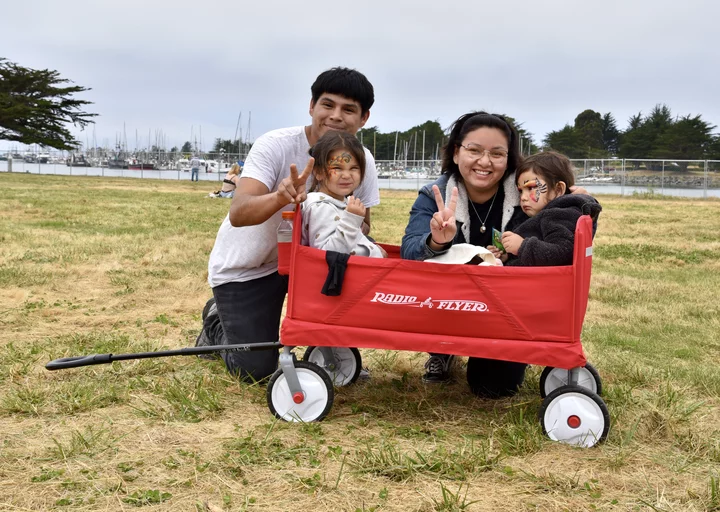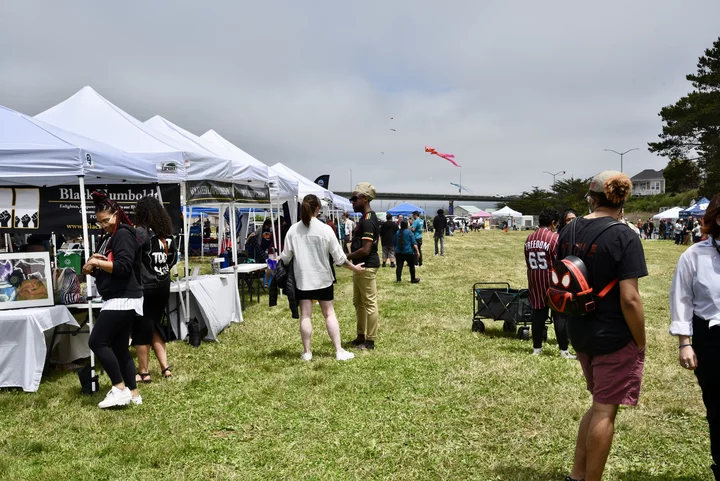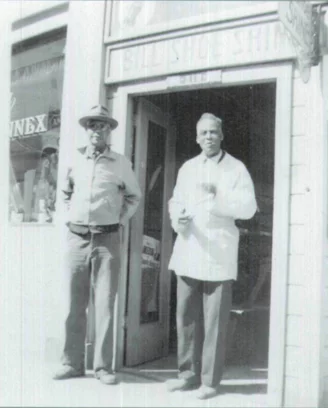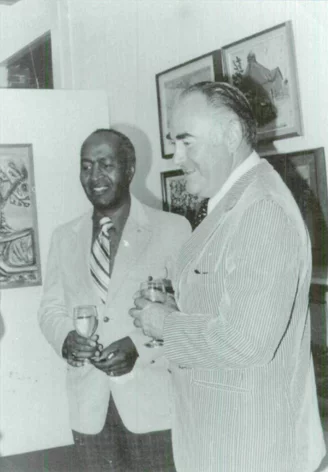OBITUARY: Robert ‘Chip’ Overholt, 1949-2023
LoCO Staff / Sunday, June 18, 2023 @ 6:56 a.m. / Obits
Robert “Chip” Overholt passed away on March 25, 2023.
Born May 11, 1949 in Scotia to Helen and Orval Overholt, Chip attended Scotia Elementary and graduated from Fortuna High school in 1967. He earned his AS from College of the Redwoods in 1969, and moved on to study philosophy and watershed management at Humboldt State University.
Early in life, Chip was highly involved with the Boy Scouts of America, achieving Eagle Scout at age 14, continuing on with the Order of the Arrow, Scotia’s troop 6 Scoutmaster, teaching outdoor survival skills, introducing and connecting many to the world of backpacking. He was a recipient of the Silver Beaver award.
Chip actively participated in athletics and remained a lifetime sports fan. He was a talented baseball and basketball player, including his seasons with FUHS and two years with the Corsairs. Chip led a private life, content with the stoic life he built and the complex mind he shared with his father. Chip admired author’s Robert Pirsig and Richard Bach, embodying a meticulous stride that could make you wonder if Chip had not read their work, but instead that they may have observed and wrote about someone like Chip. “…with as little effort as possible and without desire…you climb the mountain in an equilibrium between restlessness and exhaustion. Then when you’re no longer thinking ahead, each footstep isn’t just a means to an end but a unique event in itself…(Pirsig)”
His many friendships were broad and diversified, but his lifelong friends were the few who’ve ever found themselves not lost, just temporarily off course, likely backpacking the Scott-Salmon mountains.
Chip began working for the Pacific Lumber Company at age 14 as an employee with the company owned Scotia Inn, and retired from PALCO after an over 40-year career — though Chip was naturally drawn to and most at home outside among nature, which ultimately led him to a second career as a licensed arborist.
Chip is survived by his wife Glenda Rovai-Overholt, step-daughter Kristi Imperiale (Rhett), step-daughter Karen Wilson, and grandchildren Peyton Long (Cody), Gage Imperiale, Chandler Wilson, and Courtney Wilson. He is also survived by his son Skip Overholt and Skip’s daughter, Sydney Overholt.
Chip was preceded in death by his mother Helen and father Orval, his in-laws Evelyn and Gino Rovai, several wonderful aunts and uncles, and his devoted brother Rich Overholt.
###
The obituary above was submitted on behalf of Chip Overholt’s loved ones. The Lost Coast Outpost runs obituaries of Humboldt County residents at no charge. See guidelines here. Email news@lostcoastoutpost.com.
BOOKED
Today: 3 felonies, 15 misdemeanors, 0 infractions
JUDGED
Humboldt County Superior Court Calendar: Yesterday
CHP REPORTS
No current incidents
ELSEWHERE
Times-Standard : Civic calendar | Trinidad council to discuss water woes
Times-Standard : Humboldt County unemployment rate dips to 5.1% in November
RHBB: Wary of Cost, Humboldt Supes Reject Hemp Proposal
RHBB: 19-Year-Old Hiker Rescued After Garmin SOS Activation in Bald Hills Area Near Orick
OBITUARY: Michael Neal Kesterson, 1964-2023
LoCO Staff / Sunday, June 18, 2023 @ 6:56 a.m. / Obits
Mike’s heart gave out at his home in Eureka on June 8, 2023. He was a graduate of Fortuna High School and Phoenix Institute of Technology and was a talented Master Mechanic. Mike (Papa) had two daughters, Brittany and Nicole, and maintained a lasting friendship with their mother, Margot. Mike cherished his relationships with his family and many friends.
Mike’s free spirit found peace around the beaches of Humboldt and at his family’s ranch in Petrolia. His dog Shasta, always at his side as his constant companion. Mike was granted the gift of time to allow him to attend his sister Kris’ wedding on May 20th in Lincoln, Calif. with his entire family.
He is preceded in death by his dogs Zack and Rifle; and his grandparents Harold (Herky) and Vada Lawrence, Clarence Heney, and Pearl and Ada Kesterson. He is survived by his parents Neal and Pat Kesterson; his daughter Brittany Powell (Lyndon) grandchildren Mila and Levi; daughter Nicole Whitmire (Chase) grandchildren River, Grace and Hope; and his sister Kris Kesterson (Tom)
His ashes will be scattered at a family gathering at the Petrolia ranch.
Cherish your loved ones. “No time on earth is long enough to share with those we love or to prepare our hearts for goodbye.”
###
The obituary above was submitted on behalf of Mike Kesterson’s loved ones. The Lost Coast Outpost runs obituaries of Humboldt County residents at no charge. See guidelines here. Email news@lostcoastoutpost.com.
(PHOTOS) Humboldt Celebrates Juneteenth
Isabella Vanderheiden / Saturday, June 17, 2023 @ 4:10 p.m. / :) , Community
Monique “Mo” Harper-Desir and Harrel Deshazier strike a pose while volunteering with Black Humboldt during Saturday’s Juneteenth celebration. Photos by Isabella Vanderheiden.
###
Community members gathered at Eureka’s Halvorsen Park this Saturday afternoon to celebrate Black culture and commemorate the emancipation of enslaved African Americans in honor of Juneteenth.
Juneteenth — otherwise known as “Freedom Day” or “Emancipation Day” — commemorates the day in 1865 when slaves in Galveston, Texas, learned that the Civil War had ended and they were free. Although President Abraham Lincoln’s Emancipation Proclamation was enacted in 1863, marking the official end of slavery in the United States, it could not be enforced in many places in the South until the Civil War ended in 1865. The day became a federally recognized holiday in 2021.
“We’re celebrating today all the Black and brown folks in our community, Black liberation, Black joy and all the different ways that Blackness shows up in our community [and] all over the world also,” Monique “Mo” Harper-Desir, co-founder of Black Humboldt, said during Saturday’s celebration. “We up in this African diaspora!”
Festivities are expected to continue ‘til 10 p.m. You can find more information on the event at this link. Happy Juneteenth, Humboldt!
Keep scrolling for more pictures of today’s celebration.
###
THE ECONEWS REPORT: What’s That Fence In the River?
The EcoNews Report / Saturday, June 17, 2023 @ 10 a.m. / Environment
Photo: Gabe Rossi, UC Berkeley.
This week on the EcoNews Report hosts Alicia Hamann from Friends of the Eel River and Tom Wheeler from EPIC discuss an experimental installation in the South Fork of the Eel River. Guests Marisa McGrew from the Wiyot Tribe’s Natural Resources Department and Gabe Rossi and Philip Georgakakos, both research scientists with UC Berkeley, tell us all about the collaborative effort to install and manage a weir in the river. The primary purpose of the weir is to remove invasive pikeminnow from the river system and keep them away from prime rearing habitat for salmon and steelhead farther upstream.
Weir technology is ancient — it is a floating fence that allows researchers to monitor and manage fish populations as they migrate upstream into a trap. Native fish are released and invasive pikeminnow are removed from the river. A camera also monitors downstream migration to capture as much data as possible.
This collaborative project includes a large number of partners and community members named in the episode, and researchers are especially thankful to the landowner, Lost Coast Forest Lands, who is providing access to this site.
Click here to watch a video and learn more about this exciting project.
HUMBOLDT HISTORY: The Life and Times of Jim Howard, a Civic Leader in 20th Century Eureka
Jeremiah R. Scott Jr. / Saturday, June 17, 2023 @ 7:15 a.m. / History
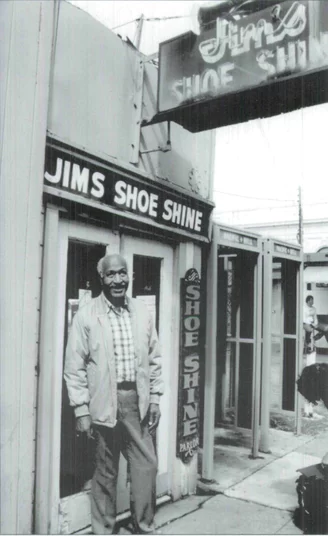
Jim Howard stands in front of his shop at 310 E Street on closing day, August 17, 1990. Howard opened business at the shop on August 17, 1954. All photos via The Humboldt Historian, from Jim Howard’s archives, unless otherwise noted.
He shined the shoes of
lumber baron William
Carson, boxing champion Joe Louis
and U.S. Senator Alan Cranston. He’s
been a grand jury member (1971), a
vice president of Eureka Rotary and
was a member of the Eureka City
Council for eighteen years.
Now retired, Jim Howard can recall a lifetime of challenges and of positive associations. Howard came to Eureka from Athens, Georgia, where he had been born on December 1, 1915. In 1916, after his father had died in a construction accident, his mother, Julia Palmer Howard, brought the six-month-old James and his three-year-old sister, Janet, to Humboldt County.
The bereaved family moved in with Mrs. Howard’s sister, Alice Turk, and her husband. Will. Will Turk, who worked as a brickmaker at the Thompson Brick Yard on Bay Street in Eureka, had come to Eureka in 1912 with his wife and five children. For many years they were the only black family in Eureka.
A single black man, Robert Neloms, lived in Eureka in 1916, but left in 1917 after World War I broke out. Neloms went to work for the Ford Motor Company in Detroit, Michigan, until he returned to Eureka in 1946. In the 1940s and ‘50s Bob Neloms operated a shoe shine stand at Coogie McDonough’s on F Street between Third and Fourth Streets. In 1918, Jim Howard’s aunt, Alice Turk, and his sister, Janet, died in the influenza epidemic. Jim’s mother later married her brother-in-law, Will Turk, and had nine children: John, Josephine, Mildred, Carl Wallace (named after Dr. Carl Wallace), Katherine, Sara Lee, Juanita, Vivian, and Cecelia.
In the 1920s another black family, the LeDouxes, moved to Eureka. The LeDoux brothers, Albert and James, are listed as football players in the 1924 and 1925 Eureka High yearbook, the Sequoia. James LeDoux played on the Eureka High School undefeated Jay Willard Team in 1927. The LeDoux family left Eureka around 1930.
The Turk-Howard family again became the only black family in Eureka until World War II.
Jim Howard started his shining career in his stepfather’s shoe shine parlor, which Will had opened in 1918 next to Jimmy Dunn’s bar on Second Street between D and E Streets. While attending Eureka schools, Jim worked after school and on Saturdays.
John Choulos, left, the owner of Gems Shoe Shine on Fifth between D and E Streets, is pictured here with a young Jim Howard in 1936. Howard worked at Gems, which featured a six-seat marble stand, from 1934 to 1942. (Courtesy of Jim Howard).
In 1934 Jim began full-time work at Gems Shoe Shine, a shop operated by John Choulos on Fifth Street between D and E in Eureka. The shop boasted six marble stands. There, Jim worked twelve-hour shifts, from 8 a.m. to 8 p.m. six days a week. He earned $11.50 per week, at a time when shoe shines were fifteen cents. Tipping was a rare act during the Depression-plagued ‘30s. Jim remembers one generous customer, however: lumber baron William Carson would pay twenty-five cents to cover the standard fifteen-cent charge. In 1941, after the cost of a shine had risen to twenty-five cents, Jim began to earn twenty dollars per week.
The war years brought new opportunities. Jim left the shoe shine business in 1942 to work at California Barrel Factory in Arcata, which manufactured a variety of wooden barrels for worldwide distribution. Jim operated a crane on the swing shift from 1942 until March 1953.
Jim sits with three siblings: Vivian, Cecelia and Neal, c. 1932.
Jim’s mother, Julia Turk, holds her daughter Cecelia and Bill Hilfiker c. 1932
Further enterprises called during the prosperous postwar years. In 1950, Jim and his wife, Edith, whom he had married on July 6, 1948, in Reno, purchased a hotel called the Ebony Rooms, The eleven-room hotel, located on Second Street between E and F Streets across from the High Lead Bar, catered to men who worked in construction. Each room contained three to four beds.
The Howards ran the hotel for three years before deciding to move to Tulsa, Oklahoma, in March, 1954, where Jim operated a milk truck. The move was short-lived, however, as the Howards returned to Eureka in less than one year and Jim purchased his shoe shine shop at 310 E Street,
The shop at 310 E Street had been purchased by Jim’s stepfather, Will Turk, in 1938. Turk ran it until his death in October 1953, when Ed Curtis, who had previously operated a shoe shine shop on Third Street in the Ten Window Williams Building, took over the lease. After Curtis died in 1954, Jim Howard purchased the equipment and assumed the lease, which cost twenty-five dollars a month, payable to landlord Harry Adorni, The equipment included an all-leather four-chair stall that featured a bear head on each chair arm. The stall was just one of two specially crafted stalls that had been made for the 1915 Panama Pacific Exposition in San Francisco. Jim used it at Jim’s Shoe Shine for thirty-six years, from August 17, 1954, until August 17, 1990.
Jim recalls that when he first started business, the competition was plentiful, “When I took over the stand in 1954, there were seven shoe shine shops in town. When I closed up, mine was the only one. When I started work with John Choulos in 1934 there were twelve to fifteen shoe shine stands in town run by Greeks and Italians,”
Jim’s first customer in 1954 was newspaper publisher Don O’Kane. O’Kane provided a profitable start to the fledgling business: he paid one dollar for the thirty-five cent shine, O’Kane also urged Jim to join the Eureka Chamber of Commerce, advice which Jim also followed profitably.
Several national celebrities sought out the services of Jim’s Shoe Shine. Joe Louis, the retired World Boxing Champion, visited in 1956, Jim found Louis to be cordial and friendly. A frequent visitor was Leo Nomelini, an all-pro football player and wrestler, who often enjoyed a shine at Jim’s place after a meal at the restaurant and bar next door. Jim also enjoyed visiting with customers Congressman Don Clausen and U.S. Senator Alan Cranston,
Jim’s brush with politics went farther than the shoe stand, however. From 1969 to 1972 he served on the Eureka Housing Authority. In 1972 Jim was appointed to the Eureka City Council Ward One, Jim was elected three times to the City Council and served until November 1990.
For several years he served as president of the Eureka Chapter of the National Association for the Advancement of Colored People, He was a vice president and a member of the board of directors of the Eureka Rotary Club. He served on the 1971 Humboldt County grand jury.
Fellow members of the Eureka City Council remember Jim as a hard worker. Cliff Stewart said, “I served with Jim from 1980 to 1984, Jim was a quiet source of help for a new council member. You could always count on him to be honest and steady. Jim had real contact with a cross segment of the community and had a feel for everybody.”
Ernie Cobine served on the Eureka City Council from 1971 to 1979. “Jim had a great sense of humor. He was diligent in finding the facts on issues. He and his wife Edith were enjoyable to be around.”
Tom Hannah, who served on the council from 1984 to 1992, said, “Jim served the City of Eureka with distinction. He stood for the best that one would expect from an elected official. He was always prepared to deal with the major issues facing the City.”
In 1987 Jim’s wife, Edith, died. In 1990 Jim retired from business, but continues to help polish Eureka through service to Rotary, local nonprofit organizations, friends and family.
Jim Howard at age 100, at the dedication of a monument to his life in Old Town in 2016. Photo: Andrew Goff.
###
###
The story above was originally printed in the Summer 1998 issue of The Humboldt Historian, a journal of the Humboldt County Historical Society, and is reprinted here with permission. The Humboldt County Historical Society is a nonprofit organization devoted to archiving, preserving and sharing Humboldt County’s rich history. You can become a member and receive a year’s worth of new issues of The Humboldt Historian at this link.
OBITUARY: Terry Lee Coltra, 1952-2023
LoCO Staff / Saturday, June 17, 2023 @ 6:56 a.m. / Obits
Terry
Lee Coltra passed away April 9, 2023 from a long battle with cancer.
He was born April 19, 1952 in Arcata to Andrew and Gertrude
(Turner) Coltra. They moved to Crescent City when he was 7 years old.
After graduating from Del Norte High School in 1970 he attended Humboldt State University and graduated with a degree in psychology. Terry began his professional career at Humboldt County Job Training as an independent monitoring unit chief until 1981, when he became Executive Director for the Hoopa Manpower Program and was eventually appointed Tribal Administrative Officer for the Hoopa Tribe. In 1984 he took a position with the Northern California Indian Development Council Inc. (NCIDC), where he eventually served as the executive director. He remained in this position until his retirement in 2018. Terry was most proud of his work of the restoration of the Carson Block building, and it is now the flagship historic office and retail building in Old Town, Eureka.
Terry had a strong commitment to developing cultural support addressing the unique needs of American Indians locally and throughout California. He was appointed by the Governor to Redwood Acre’s Ninth District Fair Board and remained a board member for many years. He was also a member of the California Chamber of Commerce and of the Humboldt County Workforce Development Board.
In his free time Terry enjoyed camping, gold panning, gardening and collecting Indian art.
Terry
was preceded in death by his parents Andrew and Gertrude Coltra,
brothers Danny and Patrick Coltra and nephew Brandon Coltra.
He is survived by his brothers Rick (Becky) Coltra of Minden, NV, Gary Coltra of Crescent City, Uncle Wayne Turner (Janet) of Crescent City, nephews Greg Coltra (Julie), Steve Coltra, niece Alisa (David) Griffith and numerous great-nieces, great-nephews and cousins.
Please join us to celebrate Terry and Dan, Saturday, August 5, 1 p.m. to 4 p.m. Located at: Lake Earl Grange Hall, 6820 Lake Earl Dr., Fort Dick. Please bring any pictures and stories you would like to share.
###
The obituary above was submitted on behalf of Terry Coltra’s loved ones. The Lost Coast Outpost runs obituaries of Humboldt County residents at no charge. See guidelines here. Email news@lostcoastoutpost.com.
OBITUARY: Rosa Ruiz Paredes, 1930-2023
LoCO Staff / Saturday, June 17, 2023 @ 6:56 a.m. / Obits
Rosa Ruiz Paredes, 92, of Hydesville, passed away on June 13, 2023 in the presence of her eldest daughter Lalita Brinckhaus, her grandson Dr. Nathan Brinckhaus, her niece Graciela “Chely” Cardenas Lima, and her husband of 67 years, William Paredes. She was born on November 23, 1930, in Contamana, Peru, South America.
Rosita was an accomplished cook, baker and friend. Sharing her food with family and friends was one of her great joys in life. She loved to garden — she and William had one of the loveliest flower and vegetable gardens along Highway 36. Her hobbies included walking, food preservation, listening to classical and religious music, playing the harmonica and volunteering at the local Food Bank. She loved to connect with people, catch up over the phone, and tell stories from her childhood.
Rosie worked as a nurse’s aide at Adventist hospitals both in Denver, Colo., and Glendale, Calif. She received her licensure in board and care and managed two board and care homes for the elderly in Riverside, Calif. For a short time when her grandkids were small, she operated an in-home daycare. She also provided In-Home Support Services for the elderly in Humboldt County.
Rosie’s avocation was to draw others to the love of God and in her 50s worked diligently with William to start a Spanish Seventh-day Adventist Church in Loma Linda, Calif. In her 60s, when she and William moved to Humboldt County for health reasons and to be near their grandchildren, she worked closely with the Fortuna Seventh-Day Adventist church to connect with the Latinx community, offering translation, rides, support, friendship, comfort and whatever was needed to share the love of God. Rosa was a lifetime Seventh-day Adventist christian and a member of the Fortuna Seventh-day Adventist Church for 30 years.
Rosie had a loving and generous personality, a beautiful smile, and infectious laughter. She was fiercely proud of all her children and grandchildren, and always carried high hopes that they would make an impact in this world for good. She greatly encouraged musical studies and higher education for all the young people she knew.
She is survived by her husband William Paredes; daughter Lalita Brinckhaus and son-in-law Ruben Brinckhaus; grand-daughter Emilia Brinckhaus Goodrich and grandson-in-law Cassidy Goodrich, great-grandchildren Ocean, Karianna, Keilani, Oasis, Coralrose, Kaleia; grandson Nathan Brinckhaus and grand daughter-in-law Isabel Lopes, great grand-daughters Aria and Ava; grand-daughter Ariana Rayburn and grandson-in-law Joshua Rayburn, great grandchildren Nathaniel and Ariella; grand-daughter Karina O’Shaughnessy and grandson-in-law Judah O’Shaughnessy; grand-daughter Claudia Velasco; daughter Mia Ruiz and daughter-in-law Barbara J Brown; daughter Adela Yanez and son-in-law Pedro Yanez, grand-daughter Daisy Yanez, grand-daughter Yulisa Olea and grandson-in-law Brian Olea, great grand-daughters Carmen and Rosalia; grand-daughter Adela Lou Lou Yanez.
A graveside service will be held on Saturday, June 24, 2023, at 12 p.m., at the Rohnerville Masonic Cemetery, 5254 Rohnerville Road, Fortuna.
###
The obituary above was submitted on behalf of Rosa Paredes’s loved ones. The Lost Coast Outpost runs obituaries of Humboldt County residents at no charge. See guidelines here. Email news@lostcoastoutpost.com.

